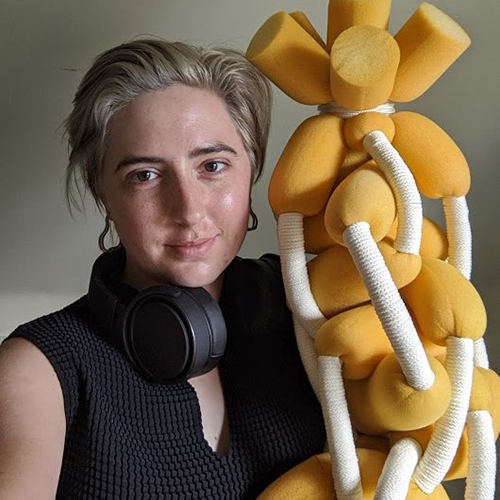Beach Towel
This “towel” was created with hundreds of discarded rubber lobster bands that were collected on shorelines across Nova Scotia. In Atlantic Canada, we are often attached to the image of the lobster, but this artwork draws attention to the need to view this industry with a critical eye toward its environmental impacts. There are solutions out there, but there needs to be an ongoing discussion with the fishing industry, designers, and engineers alike in order to enact change. Having a visual representation of the number of lobster bands may be the first step in showcasing the actual impact of these bands. There is great potential for new band designs, shore clean-up initiatives, and further research which can solve the ongoing issue of marine pollution.
About the artist
Having been born and raised throughout the Maritime provinces, Carley is often drawn to the industrial quality of maritime objects as well as the traditional roots from which they are based. From the vibrant yellow wire lobster pots, beautifully intricate factory, and hand-produced netting, to the rigging on tall ships and fishing vessels. Found plastics and fishing debris have recently been making their way into Carley’s work to emphasize notions of mass production and industrialism. She draws inspiration from what is historically considered ‘women’s work’; quilting, weaving, crocheting, and mending but contrast it with the use of industrial, often unconventional materials. An emphasis on historical craft research and a deep understanding of technical skills underpin Carley’s practice as a queer textile artist. By using industrially produced materials, vibrant factory colours, and unconventional combinations of historic and modern processes, she aims to expand what we know of traditional on and off-loom textile processes, as well as draw attention to the history of the materials being used.


